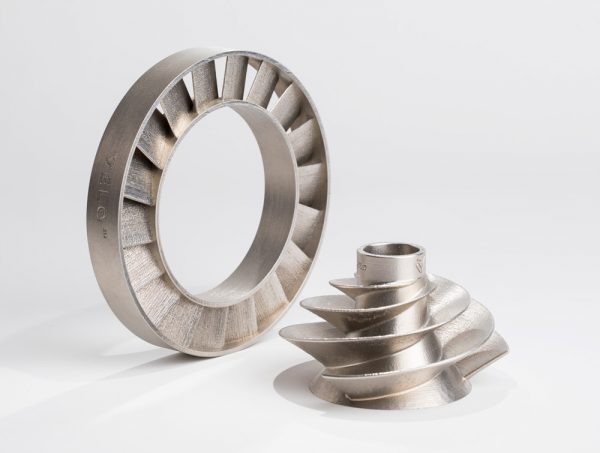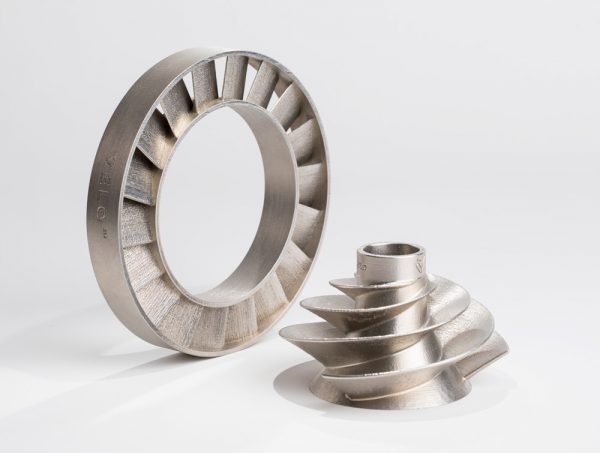Additive manufacturing (AM) is set to be a cornerstone of the heralded next industrial revolution. Digitizing manufacturing with more complex design capabilities is positioning AM at the heart of Industry 4.0. For all its promise, however, additive manufacturing has not yet lived up to its potential. The technology is seeing increased adoption, but will not be a mainstay in mainstream manufacturing until several challenges have been successfully addressed.
Among the promises of metal AM that have not yet been fulfilled are:
- A technology allowing engineers to manufacture their dream solutions, freeing them from the shackles of manufacturing constraints
- A technology allowing engineers a simpler way to design and manufacture their solutions (simpler workflow)
- No penalty on design complexity: design complexity is free
- Dependable manufacturing quality with consistent material properties and dimensional tolerances
- Acceleration of the product life cycle: significant decrease in new product time to market
These benefits are often the battle cries of systems suppliers rallying for adoption; none has yet seen full follow-through in manufacturing conditions, though. For example, while additive manufacturing has seen success in prototyping applications, speeding time to market, this is a far cry from what the opportunity for acceleration is.
What’s holding back adoption
Let’s examine two primary limitations for AM.
Issue 1: The design capabilities enabled by additive manufacturing are too limited.
“Freedom of design” is often touted as a major benefit of AM, enabling engineers to design optimal solutions to their problems with the knowledge that they will be able to manufacture these solutions. Significant limitations remain, particularly in popular laser powder bed metal AM technologies, in which overhangs lower than 45 degrees typically require supports.
This is a severe challenge, but it gets even more interesting. Depending on orientation and location in the powder bed, or with changes in curvature and aspect ratio, these overhangs can be made without support. Limitations are thus not only severe, but also complex -- and moreover, they are not constant.
Sometimes tradeoffs can be made, replacing one constraint with another. The result of all this confusion is that design for additive manufacturing (DfAM) is excruciatingly painful. It takes years to master and until one gets to high proficiency, it is often a process of adapting the solution to both design and manufacturing limitations.
Issue 2: The manufacturing process is poorly controlled – quality is extremely variable.
Metal AM and, in particular, its most widely used variant, laser powder bed, is a marvelous technology. The very fast solidification enables fantastic microstructure and material properties. The problem is that these material properties vary. They can depend on location in the build volume, proximity to surfaces, printer-to-printer variation, and the time from last maintenance. Similar variability is observed in surface quality and in dimensional accuracy. By and large the printers operate in open loop, with a large expected variability and with minimal control and quality data about the status of the printer and the performance during print. This poses a serious challenge to companies trying to adopt metal AM for production.
The variability and lack of controls and quality systems is simply prohibitive.
What needs to happen for wider AM adoption
We need to see design freedom enabled by a less restrictive AM process, allowing engineers to truly design their optimal solutions -- and then have manufacturing quality enabled by comprehensive system and process monitoring and control.
We have taken these promises and challenges into years of process development at VELO3D, creating solutions that take AM beyond these existing limitations.

Our Flow software enables the 3D printing of almost any geometry, down to five degrees without supports, as well as a large radius of curvature. Our simpler workflow removes barriers between design and manufacturability, as a design engineer can design the solution they would like to have and a manufacturing engineer working with Flow can find the best way to manufacture that part. Reliable simulation validates print feasibility, guaranteeing high success rates in the first attempt to manufacture a part -- even for parts that were considered impossible to manufacture on legacy printers.
We have also worked toward manufacturing quality, enabled by comprehensive system and process monitoring and control.
Bringing massive improvements in design freedom and in manufacturing quality control is what our Intelligent Fusion technology is about. We believe it is the future of additive manufacturing.
Stay tuned. I’ll share more about Intelligent Fusion in my next blog.




